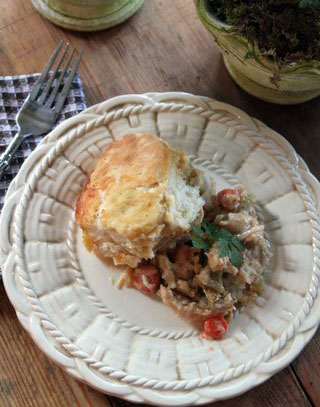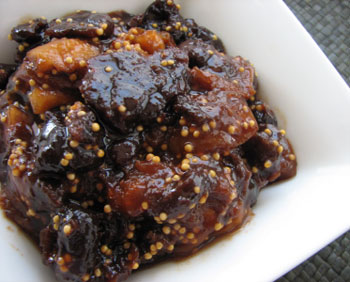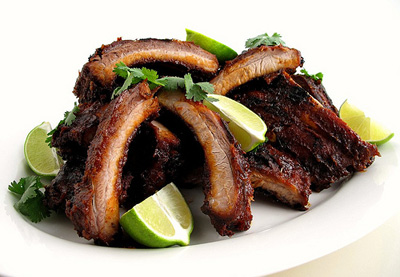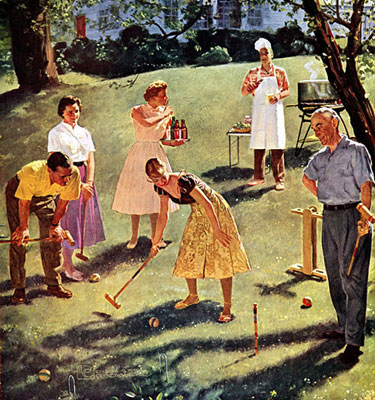 Chilies, soups, stews have been on my plate and on all those, too, who have supped with me this season. I love making a big pot or pan of something that will feed me for days as well as my staff, family and friends – when you make this dish, all three will surely be in tow!
Chilies, soups, stews have been on my plate and on all those, too, who have supped with me this season. I love making a big pot or pan of something that will feed me for days as well as my staff, family and friends – when you make this dish, all three will surely be in tow!
This dish is also a memory bank of flavors for me. First off, the creamy chicken stew bit is a reminder of a Middle Georgia institution – The New Perry Hotel. They served a cream of turkey soup with hard tack biscuits that was a staple of Middle Georgia cuisine. It never fails, when folks find out where I’m from, they always have a memory or story about The New Perry Hotel. It was always the stop of all stops for those en route to Florida or Georgia’s Golden Isles and many a family has dined at the white linen clad tables, eaten this very soup, adored the camellia prints on the walls and the live specimens in the garden, and smiled at the bud vases filled with the latter blossoms or whatever may be in season.
Mrs. Mary makes THE BEST biscuits. I cannot duplicate, recreate or copy hers. They are small but not tack-like. Butter browned tops with gauzy innards, these divinities are my favorite thing she makes. She will even make them and freeze them for me. But since I cannot have Mrs. Mary’s biscuits, Mary B’s brand of frozen biscuits is a close second. I love the tea biscuit size and the larger size too. This line has won this Farmer over to store-bought biscuits. I use them for this dish and conserve my Mrs. Mary’s for selfish indulgence and very, VERY special occasions. I did learn to share in kindergarten but since Mrs. Mary cannot come cook that often, her biscuits are a treasure I hoard!
 Well it certainly seems that Molly Stevens All About Braising: The Art of Uncomplicated Cooking
Well it certainly seems that Molly Stevens All About Braising: The Art of Uncomplicated Cooking cookbook hasn’t been the best for me. It’s honed in on my compulsive nature and practically forced me to braise anything and everything this past week.

 I spent a year living in Europe, and six months of that was in Italy. Having eaten a lot of Italian food, I like to think I understand it, perhaps just a little. In fact, whenever I try to recreate an Italian dish I think back to earlier versions that I've eaten. What was it that I liked about it? What was the essence of the dish?
I spent a year living in Europe, and six months of that was in Italy. Having eaten a lot of Italian food, I like to think I understand it, perhaps just a little. In fact, whenever I try to recreate an Italian dish I think back to earlier versions that I've eaten. What was it that I liked about it? What was the essence of the dish? Ribs are undoubtedly a cornerstone of American summer barbecues, especially in the South where it's practically an art form. Die-hard 'cue masters will argue there's a difference between barbecue and grilling. And there is: Barbecue is a low and slow process of cooking meat in a smoky humid environment.
Ribs are undoubtedly a cornerstone of American summer barbecues, especially in the South where it's practically an art form. Die-hard 'cue masters will argue there's a difference between barbecue and grilling. And there is: Barbecue is a low and slow process of cooking meat in a smoky humid environment. Chilies, soups, stews have been on my plate and on all those, too, who have supped with me this season. I love making a big pot or pan of something that will feed me for days as well as my staff, family and friends – when you make this dish, all three will surely be in tow!
Chilies, soups, stews have been on my plate and on all those, too, who have supped with me this season. I love making a big pot or pan of something that will feed me for days as well as my staff, family and friends – when you make this dish, all three will surely be in tow! I know it doesn't look like much, but looks are often deceiving.
I know it doesn't look like much, but looks are often deceiving. 
